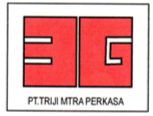We cannot emphasize enough the need to educate young people today specifically about the topic of digital misinformation. The focus should not be on whether a student has won or lost, but instead retention of the primary lessons about misinformation and credibility should be paramount. A final obvious home for educating students about digital misinformation within the Ontario curriculum would be as part of Technological Education and the Inherent Roles and Responsibilities which are outlined. Continued refinement of the systems that are designed, in terms of their logic and their interfaces, will be an ongoing issue as well. Students could also be educated about the important issue of bias in reporting, if this material is integrated into the digital literacy agenda. There then remains the question of which subjects within the Ontario Ministry of Education secondary school curriculum (Ontario Ministry of Education, 2020) would offer the best environment for this material. But we integrate as well reflection on best practices in education, when clarifying how we propose to deliver each of the different student experiences that we are creating. We begin by commenting on the possible roles for educators when students are introduced to the content we propose above.
Another possible option for delivery is an online course dedicated to digital literacy, one that could perhaps be mandatory for all students to complete as part of their graduation requirements. A hearing to determine possible dismissal of the case was held Thursday, with no immediate ruling provided. She has since pleaded not guilty but her case is ongoing, according to TMZ Sports. Once all the students are added to “DCR-01,” the teacher now projects the facts one-by-one onto a screen using a projector; the screen-layout in this case would be identical to the previous case, only the question is now being shown as a presentation as opposed to in a game. Here are the results from the quarterfinals. Educating about the credibility of information would fit nicely here. The primary advantage of the methods we propose for educating Ontario Secondary School students about credibility of online information, is to cover a breadth of contexts that are particularly relevant to this demographic, as well as to reveal specific issues such as fake reviews and targetted advertising that go beyond the concerns drawn out by the Stanford project (Wineburg et al., 2016, 2020). Our approach also introduces some gamification in order to engage the students, and supports running this education on mobile devices.
Games are available to watch on nearly any device you own. Once the students go through the entire content of the screen, they need to register their two responses using the iClicker-type device. Choose between One Week, Two Weeks or One Month daily fixed matches – all designed to make your betting experience as easy and profitable as possible.If you need help to choose – just ask us! Additionally, the teacher would also receive a detailed report which would contain every student’s submitted response so that, in the future, they can help the students improve by educating them about their mistakes. The teacher first creates a digital classroom by registering on the web-app. David feared his son would be raiding his father’s wardrobe on the first day of high school, while he hadn’t done so with Jimmy until he was well into his teen years. Crowder added Payne is “very prepared for this moment,” as Payne has played with the starters as part of the rotation of Paul sitting at the midway point of the first quarter. Online delivery of the topics proposed in this paper could also be achieved in a course that is optional and that may be selected as part of the looming mandate of the Ontario government that all secondary students complete at least 2 courses online (Miller, 2020). An e-learning course on cyber safety might actually appeal to students.

Civics is thus another area of study where our proposals fit the mandate well. We comment as well on challenges and shortcomings, leading to proposals for next steps. Outlining the steps that can be taken to realize this important achievement is the primary topic of this paper. It is important to note that the proposals presented in this paper were created by a team of computer scientists and educators. Valuable opportunities to bring together researchers from different disciplines have occurred recently (such as Joel Breakstone’s introduction to the Stanford History project at the 2017 Weblogs and Social Media conference (ICWSM 2017 Workshop on Digital Misinformation, 2017; Ciampaglia, Mantzarlis, Maus, & Menczer, 2018)), a venue with heavy participation from computer scientists) and efforts such as these must continue. In fact, educators at the national level have already begun to discuss an important agenda within schools for the general topic of digital and media literacy, where good citizenship online may be promoted but where consumer awareness is also a crucial consideration (MediaSmarts, n.d.). For example, while Instagram was showcased as a social media environment with significant current attraction, different networking platforms may come to be more popular in the future. In this section we reflect further on where our new proposals may be integrated into current secondary school teaching structures, in Ontario.
If you have any sort of concerns concerning where and ways to use 스포츠토토 검증, you could call us at our web-page.
